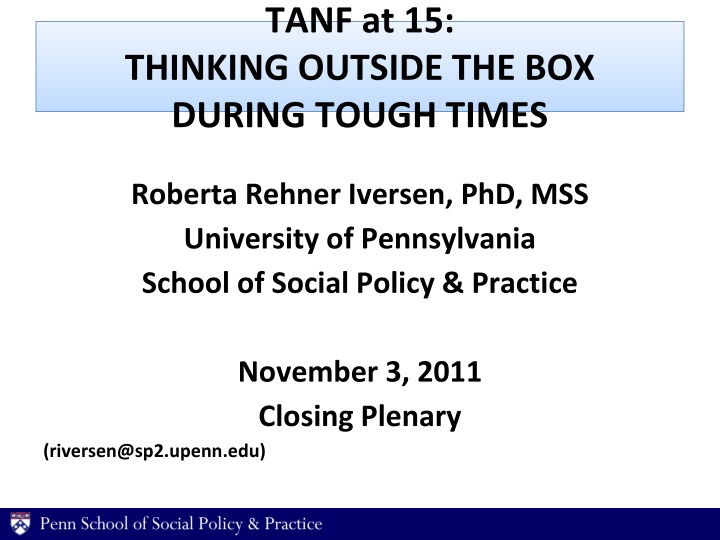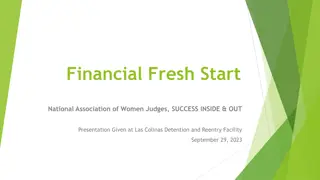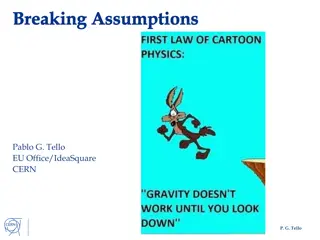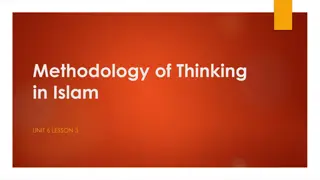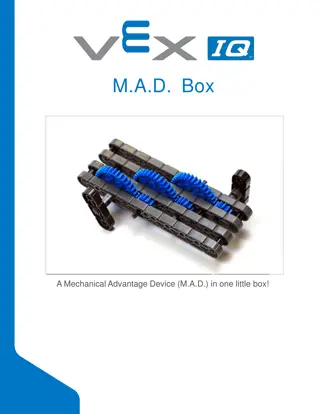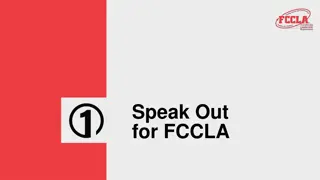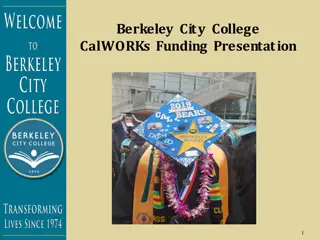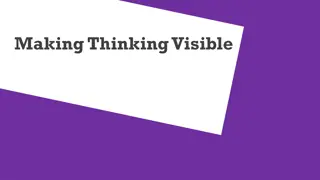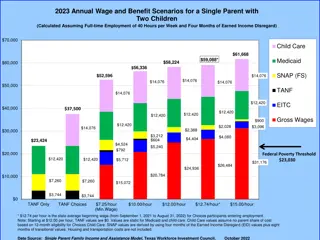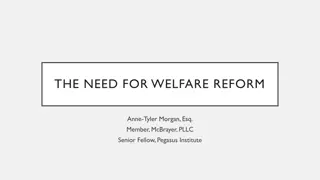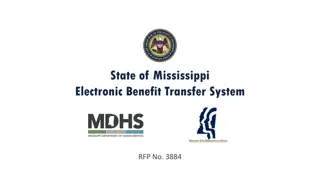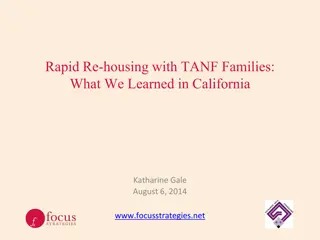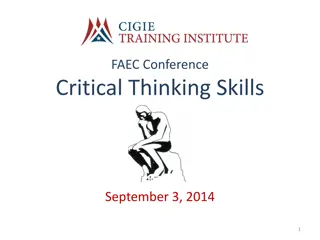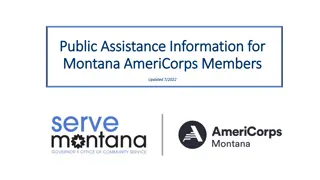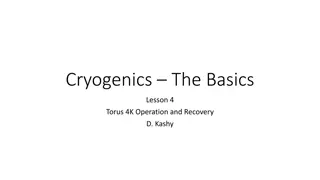Thinking Outside the Box to Enhance TANF Programs
Explore innovative strategies for TANF programs amidst tough economic conditions. Challenge traditional approaches, shift focus to family mobility, and address key barriers to participant employment. Embrace change to maximize program effectiveness and support economic mobility.
Download Presentation

Please find below an Image/Link to download the presentation.
The content on the website is provided AS IS for your information and personal use only. It may not be sold, licensed, or shared on other websites without obtaining consent from the author.If you encounter any issues during the download, it is possible that the publisher has removed the file from their server.
You are allowed to download the files provided on this website for personal or commercial use, subject to the condition that they are used lawfully. All files are the property of their respective owners.
The content on the website is provided AS IS for your information and personal use only. It may not be sold, licensed, or shared on other websites without obtaining consent from the author.
E N D
Presentation Transcript
TANF at 15: THINKING OUTSIDE THE BOX DURING TOUGH TIMES Roberta Rehner Iversen, PhD, MSS University of Pennsylvania School of Social Policy & Practice November 3, 2011 Closing Plenary (riversen@sp2.upenn.edu)
WHAT IS THE BOX, REALLY? Social Agency Financial Support Agency Employment Agency
The Revolving Squeeze Move 50% participants to work, worry about decreased funding Staff pressured to get more participants to work, but most programs can t do it, especially now with fewer jobs More worry about getting 50% WPR More pressure on staff ETC. ETC. ETC.
UN-BOX TANF DON T TALK ABOUT .. Shhhhhh .. Welfare Shhhhhh Poverty Shhhhhhhh .. Safety nets Old rhetorics dependency, reliance, stigma
UN-BOX TANF DO TALK ABOUT .. Similarity to middle-income parents in Great Recession 44 million adults work full time but are still poor Work in context of continuum of work supports Fraction of unemployed adults with deep- seated challenges
UN-BOX TANF: Change the Name of the Program TANF to FAMILY MOBILITY PROGRAMS in Departments/Offices of Economic Mobility
A. Challenges to helping participants get to work 1. Today s economy and labor market 2. What can education really do? B. Ideas for helping participants get jobs 1. Lessons from workforce development 2. Partner with local business and WIA 3. Extend and deepen data capacities C. Ideas to make sure that no participants get left behind 1. Maximize 20% exemption 2. Ramp up assessment practices e.g. CES-D & whole- family orientation 3. Substitute flexible, individualized programming versus uniform requirements
Challenges to Helping Participants GET TO WORK 1a. Today s economy and labor market: Not enough jobs After 2001 recession: 2.8 applicants for 1 job After Great Recession: 4.3 applic. for 1 job Across-industry demand shortfall
Challenges to Helping Participants GET TO WORK 1b. What kinds of jobs and skills? The middle-skill jobs debate (Middle skills = less than bachelor s degree, but some post- secondary education/training) Middle-skill jobs will be prevalent and secure (Holzer, 2009) [e.g. clerical, sales, construction, installation/repair, transportation/material moving, medical therapists & aides (respiratory, recreational, radiation), carpenters, heavy vehicle maintenance specialists, heating and air conditioning] Middle-skill jobs are declining across occupations (Autor, 2010) [e.g. Bookkeeping, clerical, administration, sales, repetitive production, craft and operative positions, and registered nursing] Low-skill jobs will remain prevalent [e.g. janitors and cleaners, home health aides like CNAs, construction laborers, security personnel] > basic education & literacy
Challenges to Helping Participants GET TO WORK 1c. What will future jobs pay? Minimum wage 1947 = $3.40/hr Minimum wage equiv. 2010 = $32.71/hr Actual minimum wage 2010 = $ 7.25/hr Family of 3 (1 adult, 2 children): 2009 Typical leaver wages (FPL) No H.S. degree H.S. degree $7 to $8/hr $15,600/yr (85% FPL) $10.46/hr $21,764/yr (118% FPL) $14.11/hr $29,352 (160% FPL)
Challenges to Helping Participants GET TO WORK 2. What can education do? We don t really know. Nuances re: rising gap in earnings due to education: Content versus signal Rise in relative earnings/falling real earnings College grad category includes professional & grad degrees, whose earnings more than B.A. 1979-2009: 4-yr degree 10% : post-BA degree 26% Gap influenced by non-wage benefits The Jury is Still Out!
Ideas for Helping Participants GET (DECENT) JOBS 1. Draw on lessons from workforce development field (wfd) - particularly sector-based training and post-employment support 2. Partner with local businesses make the business case and turnover case 3. State-level policy leverage for integrated services 4. Partner with WIA job creation; community service employment 5. Extend and deepen data capacities
Ideas to Make Sure That NO PARTICIPANTS GET LEFT BEHIND 1. Make maximum use of 20% exemption and referrals 2. Expand and intensify assessment practices CES-D (Radloff, 1977; Radloff & Locke, 1986) Whole family assessment (Iversen & Armstrong, 2006) 3. Individualized programming vs. uniform requirements 4. Consider new models, such as Conditional Cash Transfer programs
NO MORE BOXES 1. Let s get rid of TANF box 2. Let s partner with local and regional businesses & workforce dev t orgs toward maximizing job possibilities 3. Let s advocate with local & federal policymakers for fair, helpful, and workable Family Mobility Program components Thank you
References Autor, D. (2010). The polarization of job opportunities in the U.S. labor market: Implications for employment and earnings. Washington, DC: Center for American Progress and The Hamilton Project, Brookings. Berlin, G. (2011, June 2). The labor market after the Great Recession: Implications for income support policy. Remarks at the 2011 Welfare Research and Evaluation Conference. New York: MDRC. Brown, K.E. (2011, September 8). Temporary Assistance for Needy Families: Update on families served and work participation. Testimony before the Subcommittee on Human Resources, Committee on Ways and Means, House of Representatives. Washington, DC: U.S. Government Accountability Office. Bureau of Labor Statistics. (2009, December 11). Employment projections: 2008-18. Washington, DC: Department of Labor, Bureau of Labor Statistics. CLASP. (2011, October). New from CLASP: Calculating employee turnover. Washington, DC: Center for Law and Social Policy, Communications mailing.
References Couch, K.A. & Placzek, D.W. (2010). Earnings losses of displaced workers revisited. American Economic Review, 100(1), 572-589. Culhane, D.P., Fantuzzo, J., Rouse, H.L., Tam, V., & Lukens, J. (2010). Connecting the dots: The promise of integrated data systems for policy analysis and systems reform. Intelligence for Social Policy, 1(3), 1-22. Dave, D.M., Reichman, N.E. & Corman, H. (2008). Effects of welfare reform on educational acquisition of young adult women. NBER Working Paper No. 14466. Cambridge, MA: National Bureau of Economic Research. Ehrenberg, R.G. & Smith, R.S. (2003). Modern labor economics: Theory and public policy, 8thedn. Boston: Addison-Wesley. Fieldhouse, A., Bivens, J., Mishel, L., & Eisenbrey, R. (2011). Putting America back to work: Policies for job creation and stronger economic growth. Washington, DC: Economic Policy Institute. Hillier, A. E. & Culhane, D.P. (2005). Integrating and distributing administrative data to support community change. In M. Weill (ed), The handbook of community change, pp. 647-658. Thousand Oaks: Sage.
References Holzer, H.J. & Lerman, R.I. (2009). The future of middle-skill jobs. Washington, DC: Brookings. Iversen, R. R. (1995). Poor African-American women and work: The occupational attainment process. Social Problems, 42, 554-573. Iversen, R.R. & Armstrong, A.L. (2006) Jobs Aren t Enough: Toward a New Economic Mobility for Low-Income Families. Philadelphia: Temple University Press. Iversen, R.R. & Armstrong, A.L. (2007) Parents Work, Depressive Symptoms, Children, and Family Economic Mobility: What Can Ethnography Tell Us? Families in Society (Special issue on the Working Poor), 88(3), 339-350. Iversen, R. R. & Farber, N. B. (1996). Transmission of family values, work and welfare among poor urban black women. Work and Occupations, 23, 437-460. Iversen, R.R., Napolitano, L., & Furstenberg, F.F. (2011). Middle-income families in the economic downturn: Challenges and management strategies over time. Longitudinal and Life Course Studies, 2(3), 286-300. Jacobson, L., LaLonde, R., & Sullivan, D.G. (2005a). Estimating the returns to community college schooling for displaced workers. Journal of Econometrics, 125, 271-304. Jacobson, L., LaLonde, R., & Sullivan, D.G. (2005b). The impact of community college retraining on older displaced workers: Should we teach old dogs new tricks? Industrial and Labor Relations Review, 58(3), 398-415.
References Legal Momentum. (2010). TANF Work First policy helps perpetuate single mother poverty and employment in low-wage women s work. New York: Author. Levy, F. & Kochan, T. (2011). Addressing the problem of stagnant wages. Champaign, IL: Employment Policy Research Network. Oreopoulous, P., von Wachter, T., & Heisz, A. (2008). The short-and long-term career effects of graduating in a recession: Hysteresis and heterogeneity in the market for college graduates. Discussion paper No. 3578. Bonn, Germany: IZA. Retrieved October 28, 2011, from http://ssrn.com/abstract=1158975. Miller, C., Tessler, B.L., & Van Dok, M. (2009). Strategies to help low-wage workers advance: Implementation and early impacts of the Work Advancement and Support Center (WASC) Demonstration. New York: MDRC. Pearce, D. (2010). The Self-Sufficiency Standard for Pennsylvania, 7thedn. Holmes, PA: PathWays, PA. Radloff, L.S. (1977). The CES-D scale: A self-report depression scale for research in the general population. Applied Psychological Measurement, 3, 385-401. Radloff, L.S. & Locke, B.Z. (1986). The Community Mental Health Assessment Survey and the CES-D scale. In M.M. Weissman, J.K. Myer, & C.E. Ross (Eds.), Community surveys of psychiatric disorders, pp. 177-89. New Brunswick, NJ: Rutgers University Press. Riccio, J.A., Dechausay, N., Greenberg, D.M., Miller, C., Rucks, Z., & Verma, N. (2010). Toward reduced poverty across generations: Early findings from New York City s conditional cash transfer program. New York: MDRC. Shierholz, H. (2011, September 7). Ongoing lack of job openings means no jobs for more than three out of four unemployed workers. Washington, DC: Economic Policy Institute.
